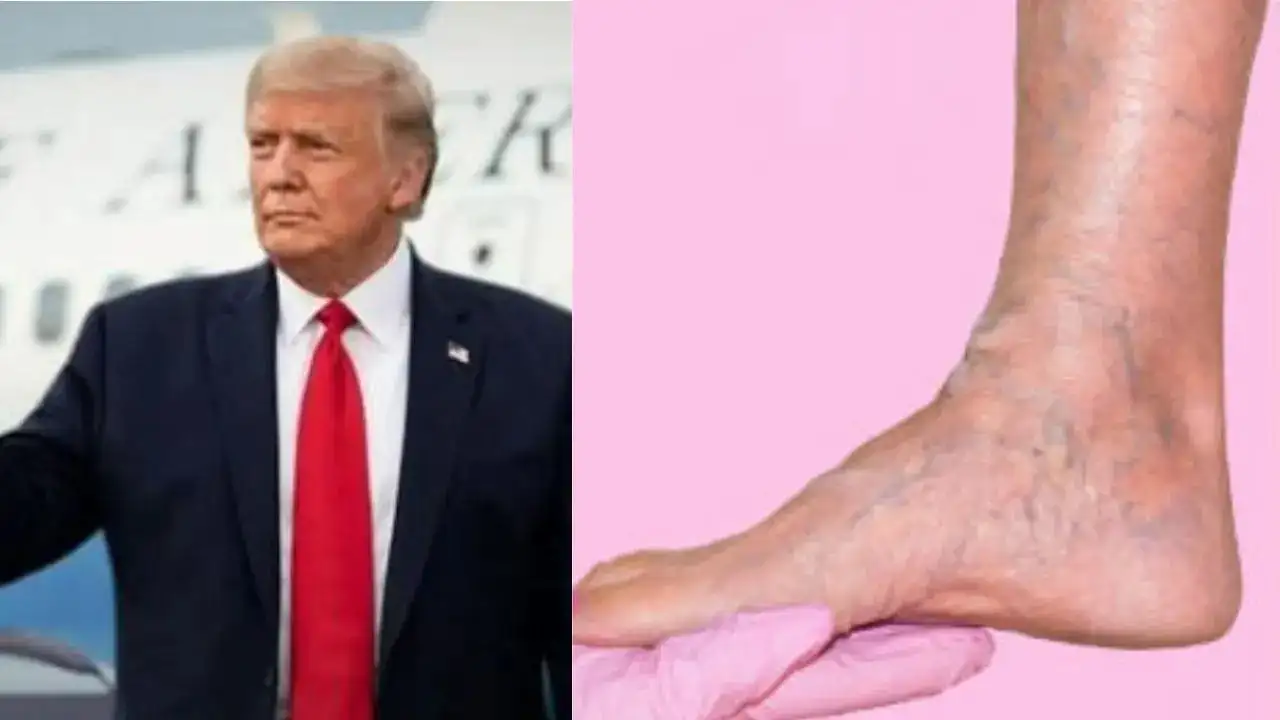
In a surprising revelation, former US President Donald Trump has been diagnosed with Chronic Venous Insufficiency (CVI). While health concerns are common among political figures due to the demanding nature of their roles, this diagnosis has brought attention to a condition that many might not be familiar with. Understanding CVI, its symptoms, underlying causes, and available treatment options is essential, especially given its potential impact on quality of life. In this article, we delve into the details of CVI, its implications, and what Mr. Trump’s diagnosis entails.
Understanding Chronic Venous Insufficiency (CVI)
Chronic Venous Insufficiency is a condition where the veins in the legs fail to efficiently return blood back to the heart. This malfunction leads to blood pooling in the veins, causing them to become enlarged, twisted, and sometimes painful. CVI is a common vascular disorder that affects a significant portion of the population, especially those with prolonged standing or certain risk factors.
What Causes CVI?
- Valve Malfunction: The primary cause of CVI is the failure of one-way valves within the veins. When these valves are defective or damaged, blood leaks backward, leading to pooling.
- Weak Vein Walls: Damage to the vein walls, often due to inflammation or injury, can contribute to the inability of veins to function properly.
- Predisposing Factors: Several factors increase the risk of developing CVI, including a family history of venous disorders, obesity, pregnancy, prolonged sitting or standing, and age-related vein weakening.
- Deep Vein Thrombosis: Past episodes of blood clots can damage vein valves, precipitating CVI.
Symptoms of Chronic Venous Insufficiency
While symptoms can vary based on severity, common signs to watch for include:
- Swelling: Persistent swelling in the lower legs and ankles, especially after long periods of standing.
- Heaviness and Fatigue: Legs may feel heavy, tired, or achy, often worsening as the day progresses.
- Skin Changes: Discoloration or darkening of the skin around the ankles, sometimes accompanied by eczema or ulcers.
- Warmth and Tenderness: Inflammation or skin warmth may indicate secondary infections or skin ulcers.
- Varicose Veins: Enlarged, twisted veins visible under the skin are a hallmark sign.
- Leg Cramps and Restless Legs: Nocturnal cramps are common in more advanced stages.
Implications of the Diagnosis for Donald Trump
The diagnosis of CVI in such a high-profile individual underscores that this condition is more prevalent than often perceived. For Donald Trump, managing this condition is crucial to prevent further complications including venous ulcers or Deep Vein Thrombosis (DVT). It also opens the conversation about vascular health’s importance among public figures and the general population.
Treatment Options for Chronic Venous Insufficiency
Treatment strategies for CVI aim to improve blood flow, reduce symptoms, and prevent complications. They range from lifestyle modifications to surgical interventions:
Conservative Management
- Compression Stockings: Wearing specially designed tights or stockings helps compress the veins, supporting blood flow and reducing swelling.
- Leg Elevation: Regularly elevating legs above heart level can decrease venous pressure and alleviate discomfort.
- Exercise: Engaging in activities that promote leg muscle strength, such as walking or swimming, enhances venous return.
- Weight Management: Maintaining a healthy weight reduces strain on the leg veins.
- Skin Care: Proper skin hygiene prevents ulcers and infections in affected areas.
Medical and Surgical Procedures
- Venous Ablation: Minimally invasive techniques such as laser or radiofrequency ablation seal off malfunctioning veins.
- Vein Stripping and Ligation: Surgical removal of damaged veins may be necessary in severe cases.
- Sclerotherapy: Injection of a solution to close off problematic veins, often used for varicose veins.
- Endovenous Therapies: Advanced procedures using ultrasound guidance to perform minimally invasive treatments.
Care and Lifestyle Adjustments
Beyond clinical interventions, adopting specific habits can significantly improve quality of life for those with CVI:
- Avoid prolonged standing or sitting without movement.
- Practice leg exercises regularly to boost circulation.
- Wear compression stockings as recommended by healthcare providers.
- Maintain hydration and a balanced diet to support vascular health.
- Monitor skin changes or ulcer development and seek prompt medical attention.
Conclusion
Donald Trump’s recent diagnosis has brought widespread awareness to Chronic Venous Insufficiency, a condition that affects millions yet remains underrecognized. Understanding the symptoms, causes, and treatment options can empower individuals to seek timely medical care and adopt healthier habits to manage the condition effectively. As with any health concern, early diagnosis and intervention are key to preventing complications and maintaining optimal vascular health.
While CVI can be chronic and sometimes debilitating, advances in medical science provide multiple avenues for managing the disorder successfully. Whether through lifestyle adjustments or medical procedures, there are effective ways to restore comfort and prevent disease progression.
Final Thoughts
Public figures like Donald Trump bring attention to health issues that many face silently. It also highlights the importance of regular health checkups and staying informed about vascular health. If you or someone you know shows symptoms of CVI, consulting a healthcare professional promptly can make a significant difference in outcomes.
For more updated news please keep visiting Prime News World.









